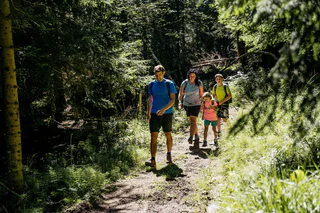
1/4
From Gschnon/Casignano to Trudner Horn
Egna/Neumarkt, Neumarkt/Egna, Alto Adige Wine Road
Obujte si turistické boty a prozkoumejte krajinu podél jihotyrolské vinařské stezky. Tyto tipy na výlety vás zavedou po klikatých cestách, přes malebné vinice a půvabné vesničky až na bezstarostná panoramatická místa. Od nenáročných procházek až po náročné túry - každý si zde najde doslova to své. Dokonalá kombinace požitku z přírody a kultury při vychutnávání místních vín a vřelé pohostinnosti charakterizuje Jihotyrolskou vinařskou stezku jako turistickou oblast pro znalce.

1/4
Egna/Neumarkt, Neumarkt/Egna, Alto Adige Wine Road

1/3
St. Nikolaus/S. Nicolò - Kaltern/Caldaro, Kaltern an der Weinstraße/Caldaro sulla Strada del Vino, Alto Adige Wine Road

1/3
Mazzon/Mazon, Neumarkt/Egna, Alto Adige Wine Road

S. Michele/St. Michael - Appiano/Eppan, Eppan an der Weinstaße/Appiano sulla Strada del Vino, Alto Adige Wine Road

Pinzano/Pinzon, Montan/Montagna, Alto Adige Wine Road

1/5
S. Michele/St. Michael - Appiano/Eppan, Eppan an der Weinstaße/Appiano sulla Strada del Vino, Alto Adige Wine Road

Pochi/Buchholz, Salorno/Salurn, Alto Adige Wine Road

1/3
Tramin an der Weinstraße/Termeno sulla Strada del Vino, Alto Adige Wine Road

Castelvecchio/Altenburg, Kaltern an der Weinstraße/Caldaro sulla Strada del Vino, Alto Adige Wine Road

Magrè s.S.d.V./Margreid a.d.W., Margreid an der Weinstraße/Magrè sulla Strada del Vino, Alto Adige Wine Road

Laghetti/Laag, Neumarkt/Egna, Alto Adige Wine Road

1/6
Missiano/Missian, Eppan an der Weinstaße/Appiano sulla Strada del Vino, Alto Adige Wine Road

1/7
Laghetti/Laag, Neumarkt/Egna, Alto Adige Wine Road

1/5
Gand/Ganda - Eppan/Appiano, Eppan an der Weinstaße/Appiano sulla Strada del Vino, Alto Adige Wine Road

1/3
Tramin an der Weinstraße/Termeno sulla Strada del Vino, Alto Adige Wine Road

Ora/Auer, Auer/Ora, Alto Adige Wine Road

1/5
Terlano/Terlan, Terlan/Terlano, Alto Adige Wine Road

1/11
Andriano/Andrian, Andrian/Andriano, Alto Adige Wine Road

1/2
Salorno/Salurn, Alto Adige Wine Road

1/6
Mazzon/Mazon, Neumarkt/Egna, Alto Adige Wine Road

1/10
Monticolo/Montiggl, Eppan an der Weinstaße/Appiano sulla Strada del Vino, Alto Adige Wine Road

Riva di Sotto/Unterrain, Eppan an der Weinstaße/Appiano sulla Strada del Vino, Alto Adige Wine Road

1/12
Caldaro Paese/Kaltern Dorf, Kaltern an der Weinstraße/Caldaro sulla Strada del Vino, Alto Adige Wine Road

Terlano/Terlan, Terlan/Terlano, Alto Adige Wine Road

1/4
Oberplanitzing/Pianizza di Sopra, Kaltern an der Weinstraße/Caldaro sulla Strada del Vino, Alto Adige Wine Road

1/3
Barleit-Lavardi/Barleit-Lavardi, Kaltern an der Weinstraße/Caldaro sulla Strada del Vino, Alto Adige Wine Road

Magrè s.S.d.V./Margreid a.d.W., Kurtatsch an der Weinstraße/Cortaccia sulla Strada del Vino, Alto Adige Wine Road

Laghetti/Laag, Neumarkt/Egna, Alto Adige Wine Road

1/2
Cortaccia s.S.d.V./Kurtatsch, Kurtatsch an der Weinstraße/Cortaccia sulla Strada del Vino, Alto Adige Wine Road

1/2
Sella/Söll, Tramin an der Weinstraße/Termeno sulla Strada del Vino, Alto Adige Wine Road